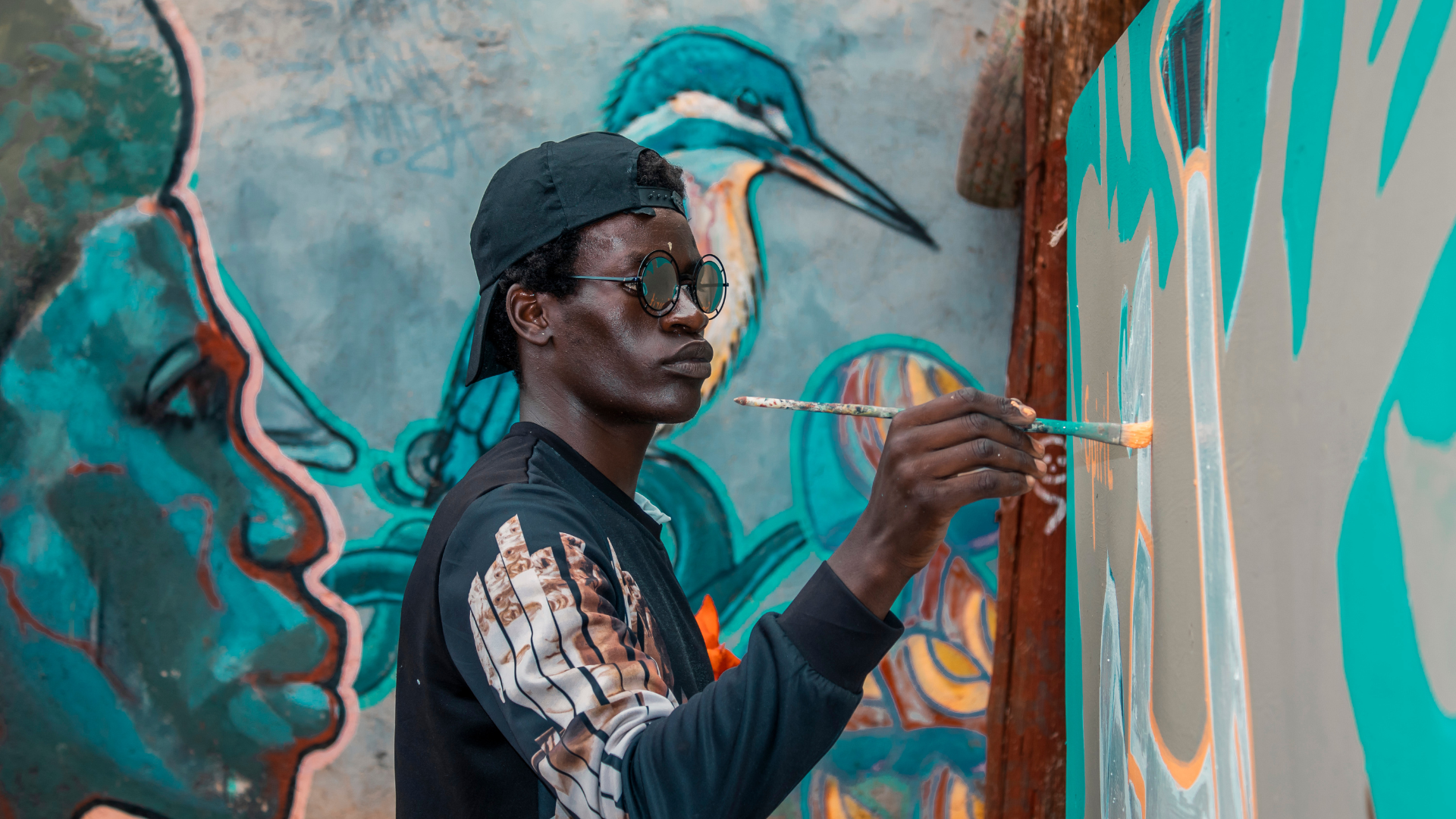Sustainable art practices are transforming the way artists create and engage with their environment. As awareness of ecological issues grows, many artists are adopting eco art techniques that prioritise sustainability in their materials and methods. By integrating principles of sustainability into their work, artists not only minimise their ecological footprint but also inspire others to consider the impact of their own creative choices.
These practices encompass a range of approaches, from using recycled materials to exploring themes that highlight environmental concerns. Sustainable art challenges traditional paradigms, prompting a reassessment of art’s role in society. As this movement gains traction, artists are finding innovative ways to connect with communities and provoke meaningful conversations about the environment.
Understanding these sustainable art practices can empower both creators and audiences to contribute positively to the planet. With creativity at the forefront, eco art represents a powerful medium for change, encouraging a collective response to the pressing challenges of sustainability.
Foundations of Sustainable Art
Sustainable art practices incorporate environmental responsibility within artistic expression. This section examines the definitions, historical development, and core principles that shape sustainable art.
Defining Sustainable Art Practices
Sustainable art practices prioritise ecological integrity while fostering creative expression. This approach encompasses various methods, including the use of recycled materials, low-impact processes, and environmentally conscious themes. Artists aim to raise awareness about environmental issues and promote sustainability through their work.
Key characteristics include:
- Material Selection: Preference for eco-friendly materials.
- Process: Minimising waste and energy consumption.
- Themes: Addressing ecological concerns in the subject matter.
By aligning artistic intent with environmental stewardship, sustainable art serves as both an aesthetic and an educational.
History and Evolution of Eco Art
Eco art, a significant subset of sustainable art, emerged as a response to environmental challenges. Its origins can be traced back to movements in the 1960s and 1970s, marked by artists like Robert Smithson and his work Spiral Jetty. This era saw a growing awareness of ecological issues, prompting artists to integrate environmental themes into their practices.
In subsequent decades, eco art evolved, with artists exploring various mediums such as land art, installation, and community-based projects. The rise of environmental activism, particularly in the late 20th century, further influenced this evolution.
Notable works include:
- Christo and Jeanne-Claude’s environmental installations.
- Agnes Meyer-Brandis and her explorations of the moon and ecology.
These developments laid the groundwork for contemporary sustainable art practices.
Core Principles of Sustainability in Art
The core principles of sustainability in art emphasise environmental, social, and economic equity. Artists adopt practices that reduce their environmental footprint and promote resource conservation.
Key principles include:
- Interconnectivity: Recognising the relationship between art and the environment.
- Transparency: Openly disclosing the materials and processes involved.
- Community Engagement: Involving local populations to foster awareness and collaboration.
By adhering to these principles, artists contribute to a broader discourse on sustainability while inspiring future generations to consider the environmental impact of their creative choices.
Sustainable Art Creation Processes
Sustainable art creation involves specific methods that prioritise ecological health and resource conservation. These methods encompass material selection, waste reduction, recycling, and energy-efficient practices.
Material Selection and Sourcing
Choosing sustainable materials is essential for eco-friendly art production. Artists often select organic, non-toxic, or locally sourced materials. Examples include:
- Recycled paper for drawings or paintings.
- Natural dyes from plants for colour.
- Biodegradable materials for sculptures.
Sourcing locally reduces the carbon footprint associated with transportation. Additionally, supporting local suppliers promotes community economies. Some artists also seek certifications that guarantee materials are sustainably harvested.
Waste Reduction Methods
Minimising waste is a critical consideration in sustainable art. Several strategies can help achieve this:
- Plan projects meticulously to estimate required materials.
- Utilise scraps from previous works in new pieces.
- Implement digital art forms, which often produce little to no physical waste.
By creatively integrating waste into new projects, artists reduce landfill contributions. Organising regular clean-ups or workshops can further educate peers on the importance of waste reduction.
Recycling and Upcycling in Art
Recycling and upcycling are vital components of sustainable art practices. Recycling involves processing used materials into new products. Upcycling transforms materials without breaking them down, adding value and creativity.
Examples include:
- Plastic bottle sculptures that highlight environmental issues.
- Furniture is made from reclaimed wood to create unique artistic pieces.
These methods inspire innovative thinking and foster a culture of resourcefulness. Artists contribute to sustainability by turning waste into compelling artworks and demonstrating that discarded items can have new life.
Energy-Efficient Artistic Practices
Energy efficiency in art creation can significantly reduce ecological impact. Artists can adopt practices such as:
- Using natural light in studios to minimise electricity consumption.
- Choosing energy-efficient tools and appliances, like LED lights.
- Planning their work schedules to align with lower energy use times.
Moreover, some artists explore renewable energy sources, such as solar panels, to power their studios. This shift not only reduces their carbon footprint but also sets a sustainable example for others in the community.
Integrating Sustainable Art in Society
Sustainable art practices can play a significant role in shaping public spaces, enhancing education, and fostering collaborations between artists and sustainability experts. These aspects help to embed sustainability into the cultural fabric of society.
Sustainable Art in Public Spaces
Public art installations can utilise recycled materials to create thought-provoking pieces that challenge perceptions of waste. Artists often turn to local resources, promoting environmental awareness while engaging communities. For example, sculptures made from discarded items tell stories of consumption and waste. These works not only beautify urban areas but also serve as platforms for dialogue about sustainability.
Art trails featuring eco-friendly installations can inspire locals and tourists alike, drawing attention to environmental issues. By incorporating sustainable practices into public art, cities can promote a more sustainable identity.
Educational Roles of Sustainable Art
Sustainable art serves an educational purpose by raising awareness about environmental issues. Workshops and exhibitions can teach participants about recycling and sustainable materials, fostering a culture of innovation.
Schools can integrate sustainable art projects into their curricula. This not only encourages creativity but also instills a sense of responsibility towards the environment. Art allows for the exploration of complex themes, making sustainability accessible. Engaging students in these conversations can lead to a new generation of environmentally-minded individuals.
Collaboration Between Artists and Sustainability Experts
The collaboration between artists and sustainability experts can generate innovative solutions to pressing environmental challenges. By combining artistic vision with technical knowledge, new materials and methods can emerge.
Artists can offer unique insights into presenting data in visually appealing ways. Sustainability experts can provide guidance on the practical implications of materials chosen for art. These partnerships can lead to impactful projects that resonate with communities. An interdisciplinary approach ensures that art is not only aesthetically pleasing but also environmentally responsible.
Challenges and Future Perspectives
Sustainable art practices face various challenges that hinder widespread implementation. Current limitations, coupled with innovations, point to a path forward. The following sections explore these complexities.
Current Limitations in Sustainable Art Practices
Artists often encounter financial constraints when adopting sustainable materials. Eco-friendly options can be more expensive than conventional supplies, limiting accessibility for emerging talent. This financial barrier can discourage artists from exploring innovative, sustainable methods.
Additionally, awareness of sustainable practices remains low in certain communities. Many artists may not have the resources or knowledge to implement sustainable techniques effectively. The lack of widespread education on sustainability in art leads to the underutilisation of available resources.
Logistical issues also contribute to the challenge. The supply chain for sustainable materials is often less developed, resulting in delays and unavailability. Artists may struggle to find local sources for eco-friendly products.
Innovations and Technological Advancements
Advancements in technology bring promising solutions to the challenges faced by sustainable art practices. Innovations in sustainable materials, such as biodegradable paints and recycled substrates, provide artists with new tools for expression. These materials significantly reduce environmental impact while maintaining artistic quality.
Digital tools also facilitate the shift towards sustainability. Artists can create digital artworks that eliminate the need for physical materials. This not only saves resources but also allows for easier sharing and collaboration.
Furthermore, virtual and augmented reality are emerging as platforms for sustainable art. These technologies enable artists to showcase their work without creating physical products, reducing waste and carbon footprint.
Forging a Path Forward
Collaboration between artists, educators, and manufacturers is essential for promoting sustainable practices in the art sector. Creating partnerships can facilitate access to sustainable materials and resources. This collective effort increases awareness and draws attention to the importance of sustainability in art.
Educational initiatives play a crucial role in this transition. Workshops and courses focused on sustainable art can enlighten artists about eco-friendly practices. These platforms can also foster creativity in utilising available resources.
Moreover, engaging the community is vital. Encouraging public participation in sustainable art projects can deepen understanding and commitment to sustainable living. It creates a more connected environment where art and sustainability thrive together.







